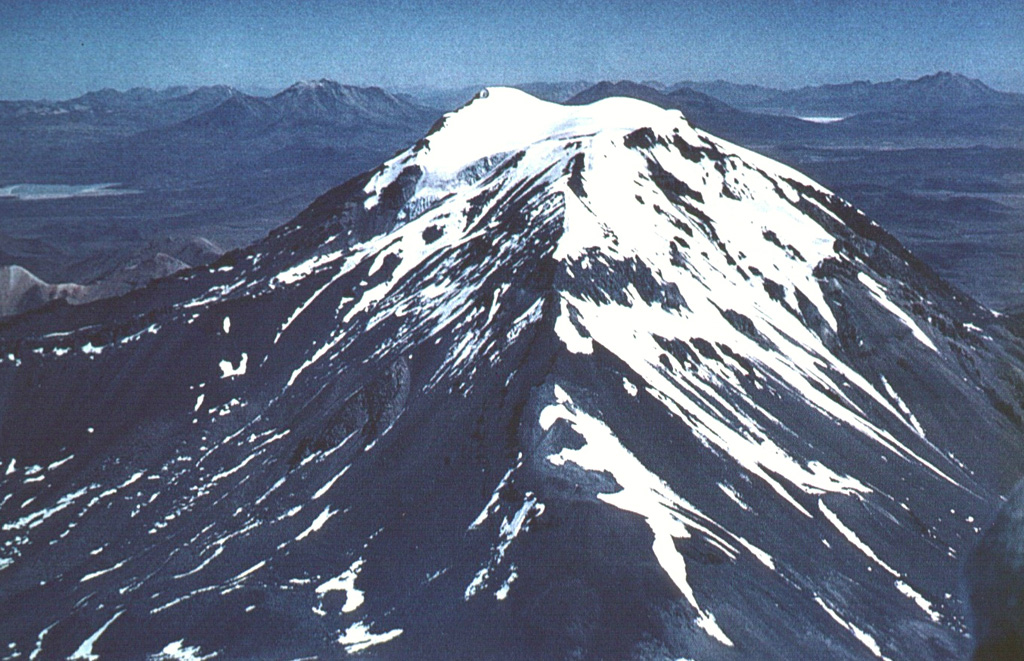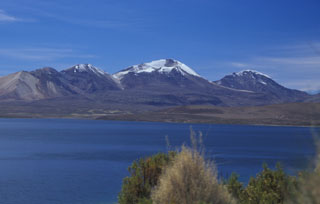Image GVP-06875

Glacier-capped Cerro Capurata lies at the southern end of the Nevados de Quimsachata volcano group. Quimsachata means "three" in the Andean Aymará language, and Capurata, along with 5730-m-high Humarata at the northern end of the chain and 6052-m-high Acotango in the center, straddles the Chile-Bolivia boundary along a roughly N-S line. The 6052-m-high Acotango stratovolcano is the central and highest of the three stratovolcanoes, each of which may have been active during the Holocene.
Photo by Sergio Kunstmann-Z (courtesy of Oscar González-Ferrán, University of Chile).
![]() This image is made available under the Creative Commons BY-NC 4.0 license terms.
This image is made available under the Creative Commons BY-NC 4.0 license terms.

Acotango
